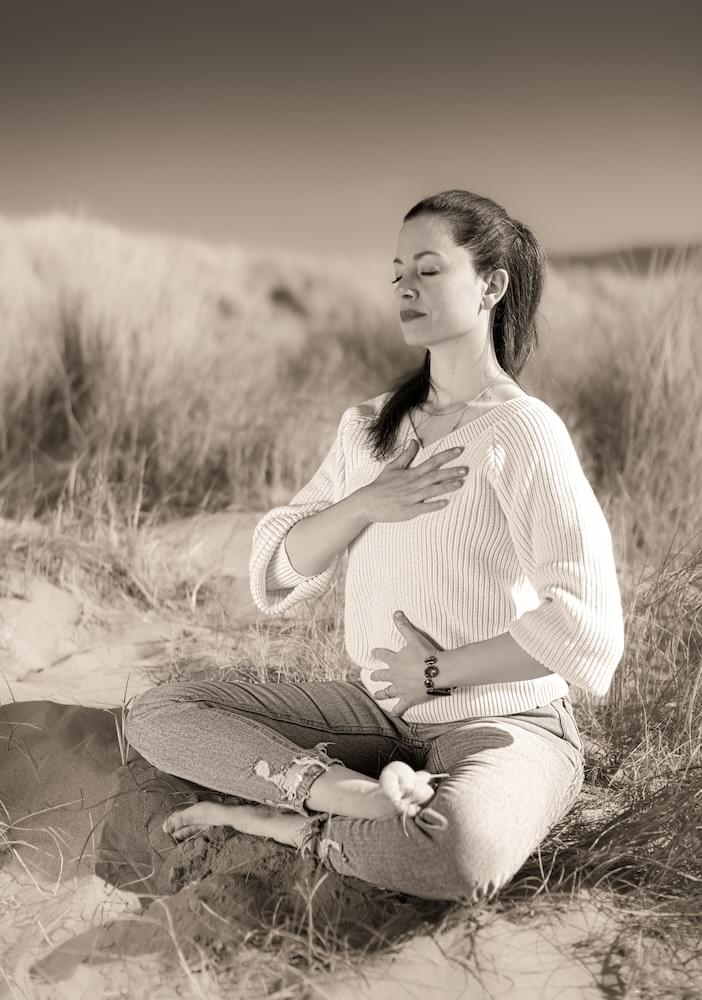
Yoga
Yoga is not just about relaxation, flexibility, or sitting cross-legged. It teaches you how to stay calm and connected—to yourself and others—while doing physically, emotionally, and mentally hard things, and making that process meaningful.
To me, this is what spirituality really is.
"We think of Yoga as a Physical Practice"
But really, it’s the experience of being in a process that is physical, emotional, mental—and yes, dare I say it—spiritual.
Spirituality.
For a long time during my science career, I found that word... icky. Loaded. Awkward. And yet, it has become a profoundly important part of my own healing process.So what does spirituality really mean? For me—and for many of the Eastern traditions I’ve studied—spirituality is about connecting to a deeper meaning. A bigger picture. Something beyond just yourself.
This sense of union—with the self, with others, with the world around us—brings a feeling of connection, peace, and joy. And I believe this is something we’ve become deprived of in the West, where meaning is so often tied to individual success and productivity.
We are wired to connect. To nature. To each other. To our own bodies. We’ve just forgotten how.
Yoga helps us remember.
It brings us back to a sense of meaning that arises not from achievement—but from our connection to something greater, and how we serve others through it.That, to me, is spirituality. It has nothing to do with religion, or spirits, or the afterlife. It has everything to do with coming home to yourself—and everything else.
Through mindful movement, breathwork, meditation, visualisation, and mental reframing, yoga gives you an integrated system to work with chronic stress, anxiety, and emotional disconnection.
Not just to relax—but to pursue something difficult and worthwhile, while staying present and whole in the process.

"Burnout is often regarded as a mental problem"
"But in truth, it is full body, and can therefore only be resolved by integrating the physical, emotional, mental, and spiritual experience experience."
In the West, burnout is often treated as a mindset problem. You talk about it in therapy. You analyze it. You try to “manage” it—like it’s a project you can control or fix if you just understand it well enough.
But burnout is not just in your head. It lives in your body. It shakes your emotions. It clouds your thinking. It can even make you question your sense of purpose, your direction, and who you are.
Trying to recover from burnout through talk therapy alone is like trying to climb Everest by reading a book about it. You might understand the theory, but your body hasn’t acclimatized. Your muscles haven’t moved. Your lungs haven’t adjusted to the altitude. And your heart hasn’t learned how to stay steady when the air gets thin.
That’s what’s missing from most burnout recovery programs: a way to work with your whole self—not just your mind. And this whole self experience, is precisely what yoga focuses on, and why I find it such an amazing integrative practice in the pursuit of healing from chronic stress.
“When you look down on Earth from space, there are no borders.”
Tim Peake, former astronaut and author of Space: The Human Story
Yoga for Burnout
The purpose of yoga is to reconnect the mind and body, and in doing so, loosen our attachment to goals, deadlines, status, and the illusion that we are only what we achieve.
When we begin to reconnect to what truly matters—to our breath, our body, our values—we also start to feel less alone. We begin to see that we are not separate, not isolated, not failing on our own. We are connected: to each other, to the earth, to the moment we are in.When we zoom out, when we soften the hard edges of separation—between organs, between disciplines, between people—we find that health isn’t about fixing broken parts. It’s about becoming whole.
That’s what yoga has taught me. I came for fitness and stress relief. I stayed because I discovered something more profound: The quiet joy of coming home to myself. The home that is my body. The relief that comes with total honesty about what I can and cannot do.
And that feeling—of not being alone, of not needing to hide, of being fully, unapologetically yourself and still belonging—is what keeps the next burnout at bay.
How I teach and use Yoga
I teach yoga through classes, audio courses, videos, meditations, and integrated in individual and group coaching.
Find your option below.
Breathwork
One of the big branches of yoga that is currently starting to receive the attention it deserves, is breathwork (pranayama). If you are curious how better breathing may help you, check out the 'pysical stress' resources page.
Yoga Videos
Want to try out my classes at home? Find a variety of classes and levels on my youtube channel.
Meditations
Meditation is as much part of yoga as movement is. Find my meditations on Insight Timer
Copyright Inge Wolsink 2025



